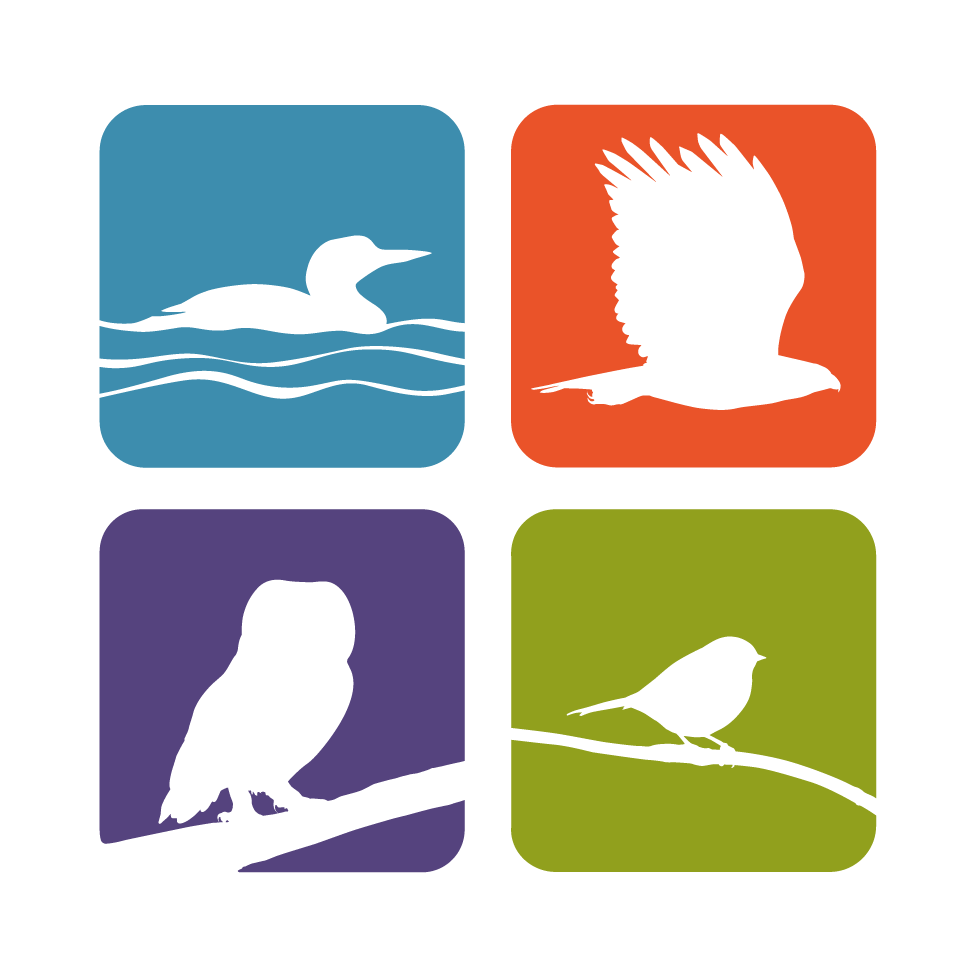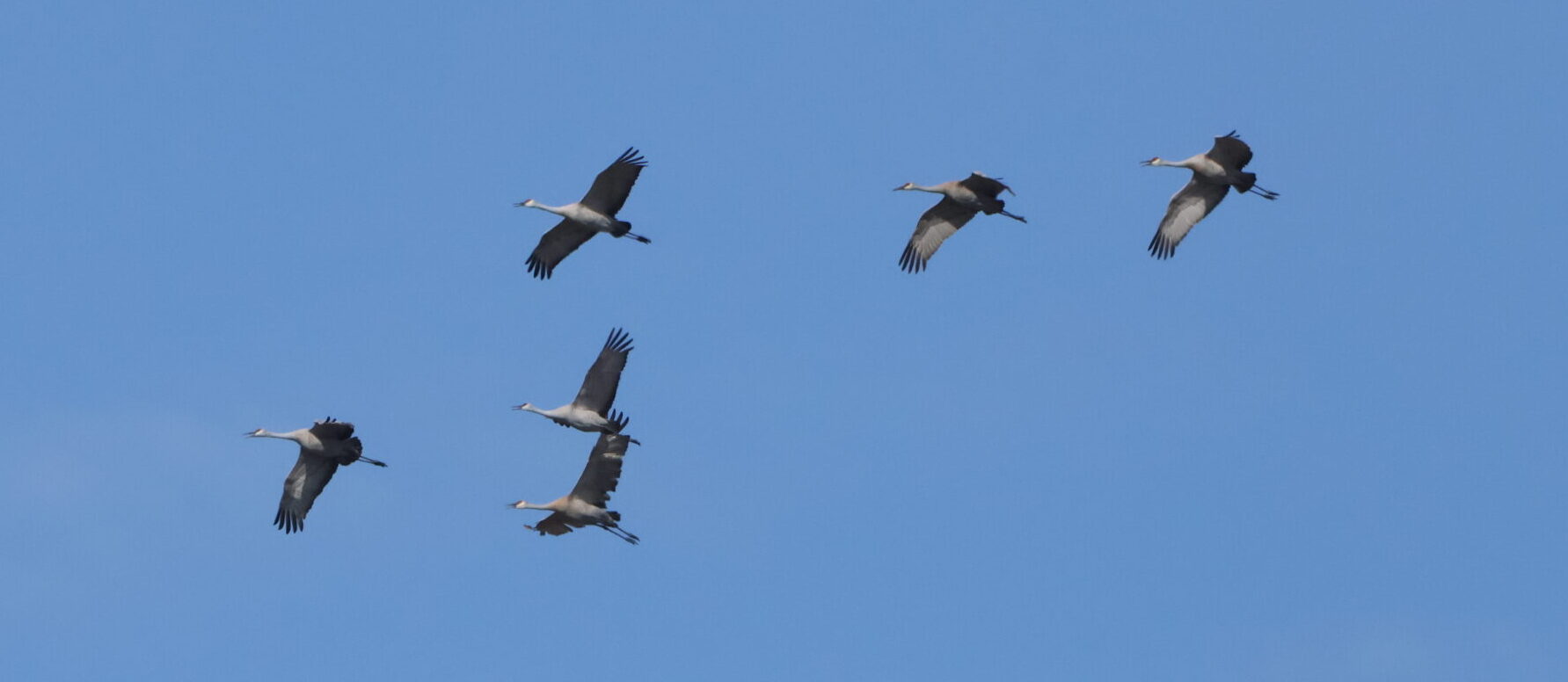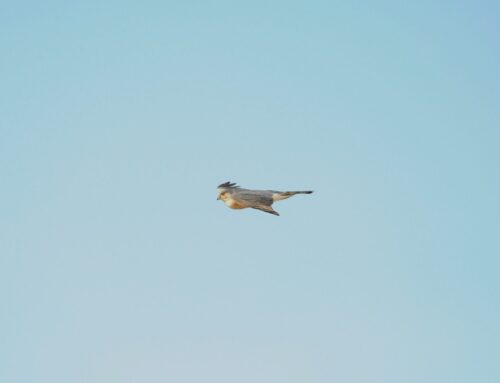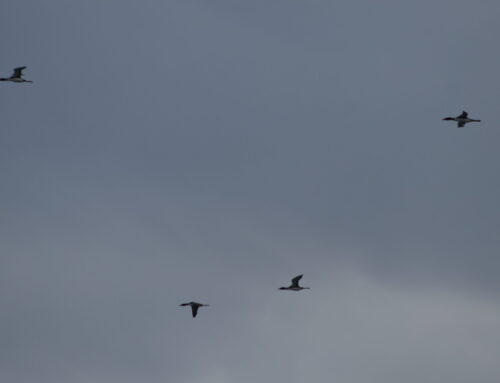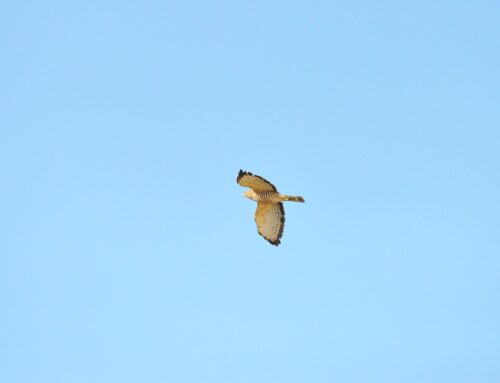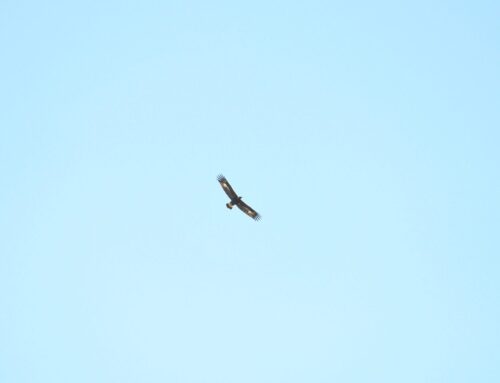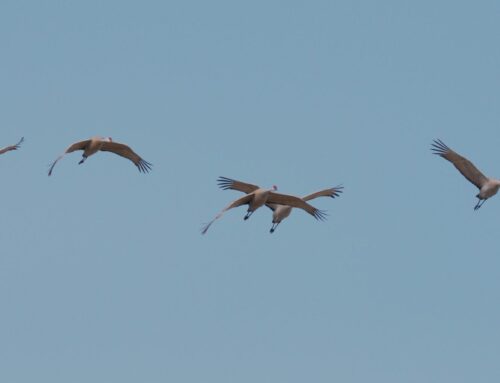We are only a couple of days into the spring waterbird count and have already seen some significant movement at the Point. The first day of the count saw what is probably the last major push of Sandhill Cranes, 3,198 of them in a single day. The vast majority of the birds moved through in just a couple of hours. During that time, paying attention to anything else was hard due to the near-constant stream of cranes and the magnificent chorus that erupted from the flocks.
Other waterbird migrants have been slowly trickling in, with Common Loons and Long-tailed Ducks consistently passing the Point in small numbers. Many gulls have been following the fishing boats, scavenging what they can from them. Among them on Tuesday was a Great Black-backed Gull, which dwarfed all the nearby Herring and Ring-billed Gulls. Wednesday’s bad weather brought the first White-winged Scoters, Greater Scaups, and Red-necked Grebes. The bad weather also kept many of the dabbling ducks close, with decent numbers of Green-winged Teals and Northern Pintails soaring by, often in mixed flocks with other dabblers.
Songbirds have also been on the move, with fairly heavy pushes of Pine Siskins, American Robins, and various blackbirds heading north. Another nice treat was a Boreal Chickadee that hung around the waterbird tent with a large group of Black-capped Chickadees.
~ Troy Herrel
2024 Spring Waterbird Counter
Featured photo: Sandhill Cranes. Photo by Troy Herrel
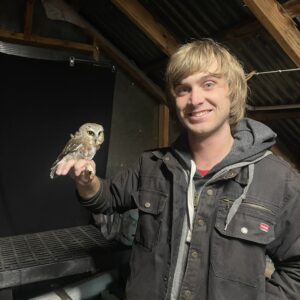
Troy is a recent graduate from The Ohio State University where he obtained a degree in zoology. He has experience banding passerines and raptors, conducting point counts, and doing migration surveys. He spent last fall at Hawk Mountain Sanctuary in Pennsylvania, where he assisted the biologists with various research and educational outreach. He hopes to one day get a master’s degree and continue working with wildlife.

